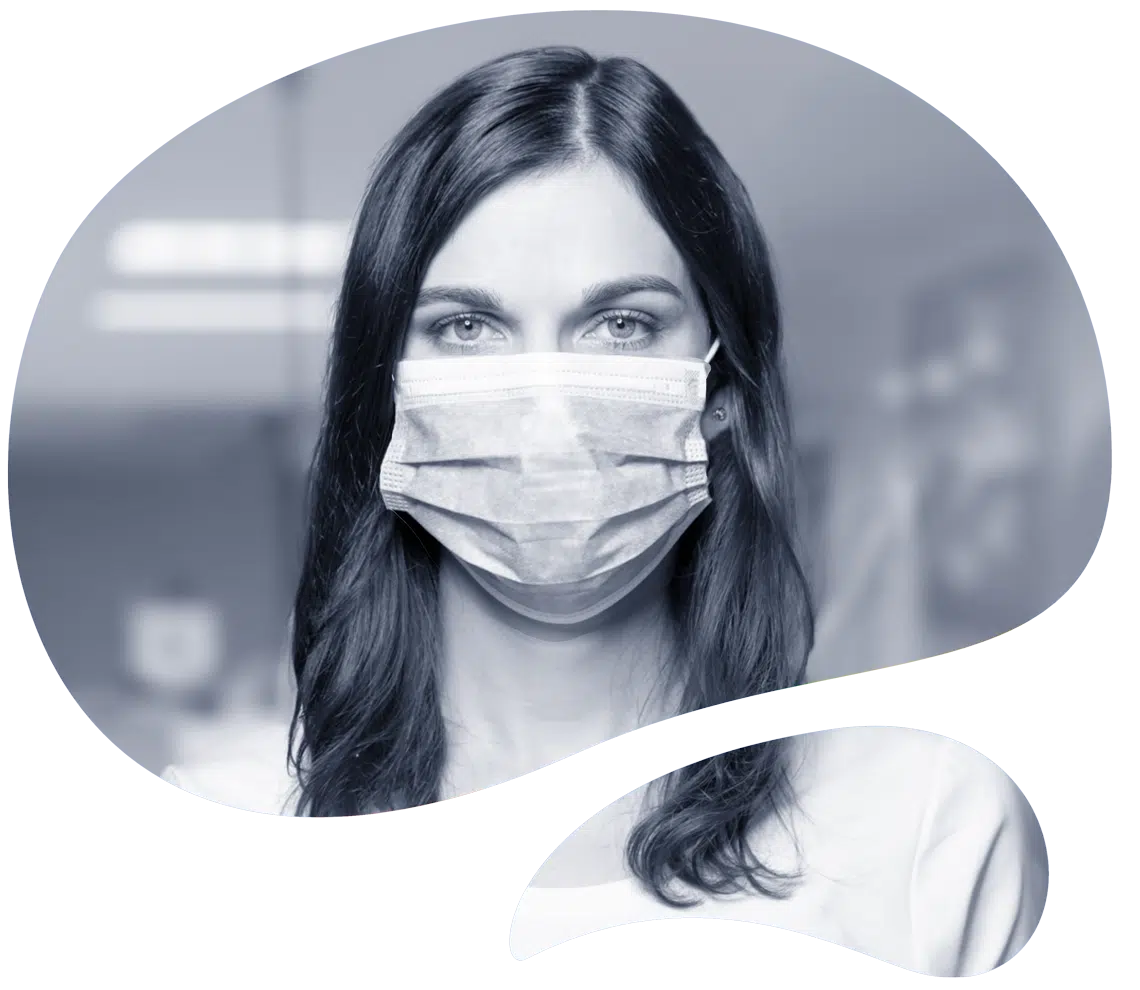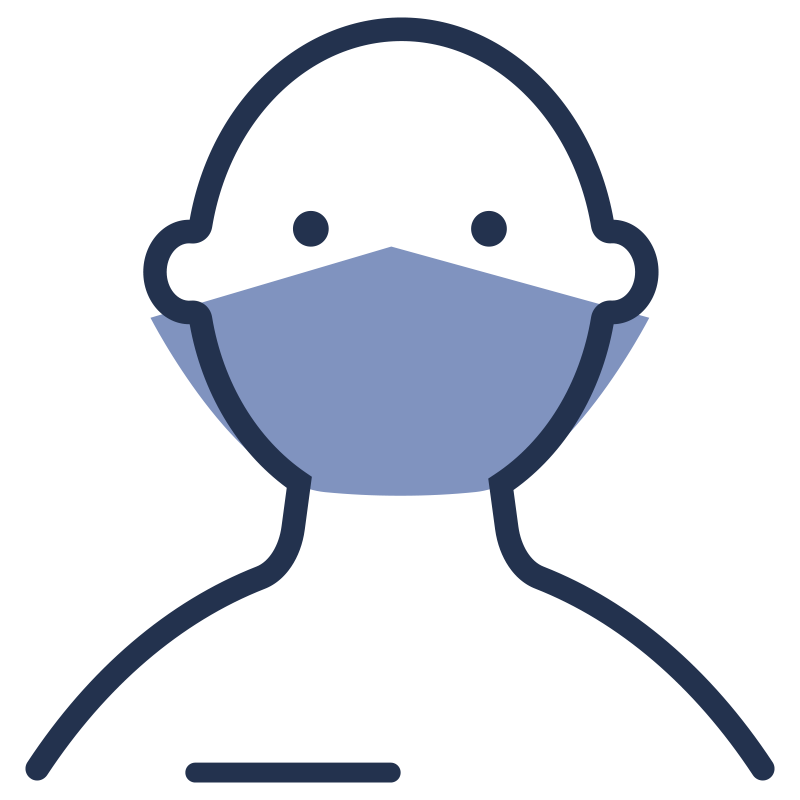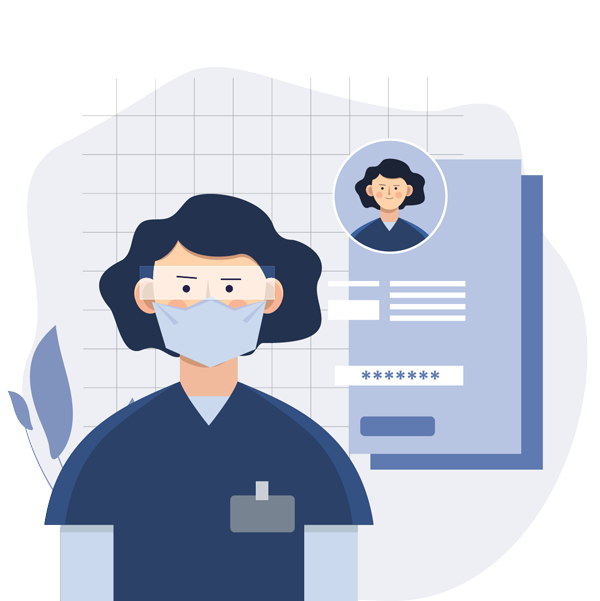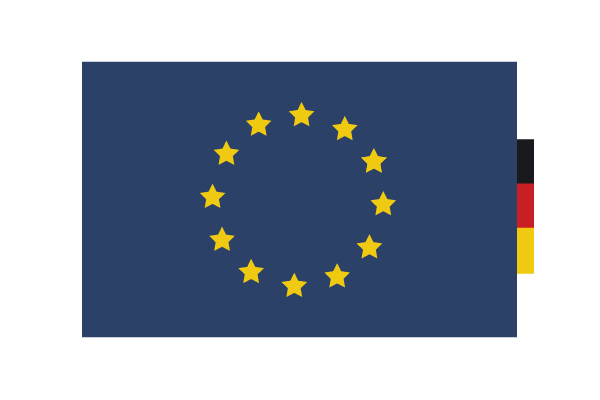Periocular Recognition
Identity-proofing with your eyes only

Biometric recognition systems that focus on the eye region are known as periocular recognition systems. The eye region contains the richest features best for biometric recognition. These features remain consistent despite poses, aging, expressions, changes in facial features, or other artifacts such as lighting conditions.

BioID’s patented eye / periocular recognition system identifies individuals addressing the challenges of facial recognition during the pandemic.
BioID’s patented technology has been used for biometric applications for years. It is more inclusive, addressing challenges where face recognition was having difficulties. Today, it is used in high-security scenarios where masks or partial face coverings are common, such as healthcare.
Facial Recognition with a Mask
Even post-COVID, wearing a medical face mask is still very normal among the majority of the population, who are more conscious about protecting themselves and others. While our facial recognition technology already works with a mask, for high-security applications where partially obscuring the face or wearing a mask is part of everyday life (e.g., healthcare), BioID has developed a patented periocular recognition technology that focuses on recognizing a person only through the area around their eyes with better user experience.

Authentication
Developers have an added option for strong biometric authentication integration in their applications with our periocular trait.
In general, this technology is less affected by lighting changes and is highly detailed in identifying facial features.
Due to its precision, flexibility, and ability to function effectively in any situation, it is gaining traction by itself or in conjunction with face recognition.

High-Security & Personal Protection
Eye recognition enables new use cases that were challenging with face recognition alone.
It looks at the fine features around the eyes, such as lashes, lids, brows, and folds in the skin, as well as the full or partial iris.
This solution is perfect for situations where only the eyes are uncovered – like healthcare and patient recognition, food service, the medical industry, construction, and workforces that are exposed to harmful chemicals or dust.
This is particularly useful when wearing a mask or covering the mouth and nose is mandatory.

One-Step Face & Iris Recognition
Just like face recognition, our periocular recognition works with a standard smartphone camera, webcam, or security camera and requires only a simple selfie.
Periocular recognition is more resilient to changes in appearance, such as applying makeup or growing facial hair.
Combining eye recognition with face recognition can enhance accuracy and improve performance while maintaining the same user-friendly experience.
Use Case Healthcare

For healthcare providers, it is also important to verify patient identity for insurance purposes.
This can be done through BioID PhotoVerify. This feature of the BioID Web Service verifies whether a person matches their photo ID within seconds, so fraud or identity misuse can be substantially reduced.
The Software as a Service can be easily integrated and adapted to special applications, with strong and intuitive face recognition through a standard webcam or smartphone camera.
Made in Germany
since 1998

Originating from the research institute Fraunhofer IIS in 1998, BioID is a German biometrics company.
Our technology has a proven record since its inception and is trusted by countless enterprises, banks, and government organizations.